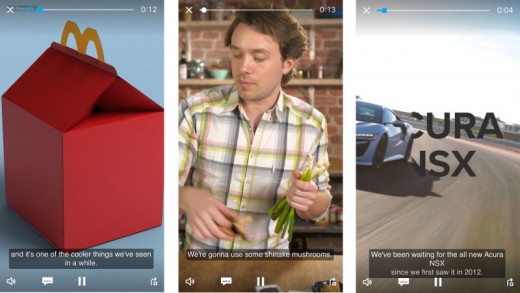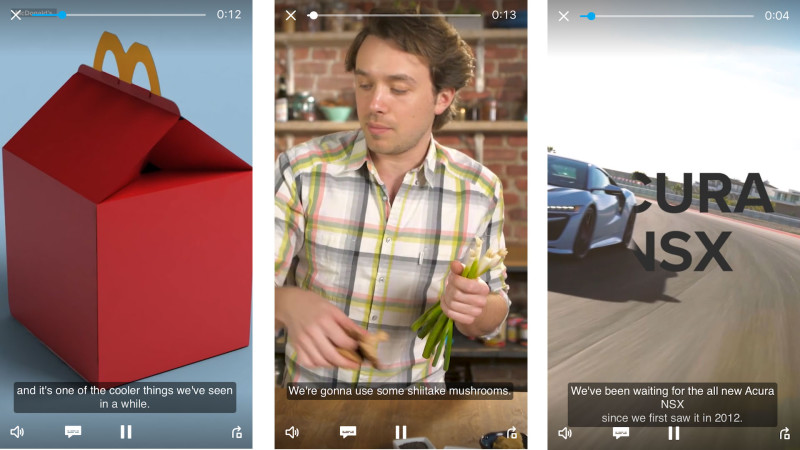Snapchat uncover’s caption button makes movies audio-agnostic
Snapchat has added a closed-captioning button to its discover part so that publishers could make their movies audio-optional.

Snapchat uncover publishers like Mashable and Tastemade have used the closed-captioning button to make their videos audio-not obligatory.
lots of people are watching videos on their phones, lots of them without their headphones on. That poses a problem for video products and services and publishers who don’t wish to alienate that audio-averse target market. It has additionally ended in a rise in closed-captioned videos on-line, a pattern that Snapchat has joined.
Snapchat has quietly delivered a caption button that uncover publishers can use to make their videos audio-non-compulsory. When a writer has made the option on hand, individuals can click on the button to toggle on subtitles in an effort to watch a video without sound. A Snapchat spokesperson confirmed that the company presented the closed captions for long-kind videos inside discover a couple of month in the past but declined to claim whether there are any plans to extend them to other movies inside Snapchat, such as live stories or individuals’ stories.
The Snapchat-enabled captioning hasn’t but been widely utilized by discover publishers, but advertising Land got here throughout examples on the uncover channels of tech-and-tradition news site Mashable and food-centric digital video community Tastemade.
“Our purpose is to have each video that has an individual on camera speaking have captioning,” said Tastemade’s head of manufacturing, Jay Holzer. “usually perhaps half of of our videos on any given day require you to remember what a person is announcing.”
Closed captioning has at all times been about making movies available to as many individuals as possible. generally, that has meant listening to-impaired viewers or viewers who speak a different language, which might be the two makes use of that YouTube has historically pointed to for its closed-captioning instrument. however just lately, it’s also meant cellular viewers.
considering smartphones enable folks to look at movies just about anywhere, they frequently do. however on occasion these places don’t accommodate observing the videos with the sound on. as an instance, some section of Tastemade’s Snapchat target audience “may be in school,” Holzer mentioned, nodding to the app’s recognition with faculty and high school college students.
With more than half of of YouTube’s and facebook’s audiences on mobile and all of Snapchat’s on the smaller display, making movies audio-optional is almost turning into a requirement for video publishers taking a look to keep their smartphone audience’s consideration and steer clear of watering down the content of their cellular programming to the twenty first-century version of a silent film.
“obviously with any platform, especially one that’s cellular-first, there’s some share of people who are by no means going to observe your stuff with the sound on,” Holzer mentioned. “So i feel having captions provides us the arrogance to check out extra stuff with people on digicam and issues that would be extra appropriate to a conventional viewing atmosphere as a result of people can have the opportunity to experience these, even supposing they’re staring at them on their cell phone with the sound grew to become off.”
in keeping with facebook, forty one percent of movies are meaningless without sound, and folks spend, on average, 12 p.c extra time staring at movies when captions are brought. That explained why closing month, the social community started mechanically captioning brands’ video commercials.
Some publishers had in the past known that smartphones and sound don’t always go collectively. Vox.com was once one of the most first publishers to insert captions into its fb videos after facebook enabled the option in September 2014. And Vice has captioned some of the movies it distributes through its Snapchat uncover channel.
but Holzer said Snapchat’s tv-like captioning process makes issues more straightforward for media companies because the captions don’t must be “manually hardcoded” into the video recordsdata. And the button that lets folks toggle captions on or off doesn’t drive viewers to stare on the captions in the event that they’re looking at a video with the sound on.
with the intention to characteristic the captions, a publisher should create the same subtitle file that television displays create in order to comply with the FCC’s principles around closed captioning. these information are uploaded when the publisher is uploading the videos and other content to appear in its discover channel. that implies Snapchat’s process for enabling closed captions could be easier for any television networks or studios — *cough* uncover partners like CNN, Comedy vital, ESPN, food community, Fusion, MTV, national Geographic and Vice *cough* — taking a look to deliver their content into its app.
(Some photography used under license from Shutterstock.com.)
marketing Land – web advertising information, methods & pointers
(27)















